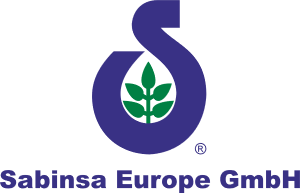Some raw material manufacturers claim an active ingredient level for some botanical extracts in excess of the amount possible. Thus, the extracts they are selling may not be pure or their products may not be properly standardized. We take this opportunity to dispel commonly held myths on some botanical products.
Sida cordifolia Linn. (Fam. Malvaceae) is a small herb that grows throughout the tropical and subtropical plains of India. It is beneficial for respiratory health and valued for its antipyretic (reduces fever) and thermogenic properties. S. cordifolia is a rich source of alkaloids.1
The main portion of the alkaloids has been identified as ephedrine.2 Ephedrine and y -ephedrine constitute the major compounds in the aerial parts of S. cordifolia, while they occur as minor components in the roots.1
Some manufacturers claim a 4%-8% ephedrine content for S. cordifolia extract. This is not the case as discussed below.
Gunatilaka and coworkers3 determined the alkaloid content of S. cordiolia extracts prepared from the leaves, stems, and roots of plants from different localities in Sri Lanka. The following results were obtained: S. cordifolia (Addalaichenai) contained 0.63% alkaloids, S. cordifolia (Mahiyangana) contained 0.42% alkaloids, S. cordifolia (Nochchiyagama) contained 0.29% alkaloids, and S. cordifolia (Puttalam) contained 1.18% alkaloids.
Sources:
- Ghosal, S. et al. (1975) Phytochemistry 14, 830-832.
- Chopra, R.N. (1982) Indigenous Drugs of India, Academic Publishers.
- Gunatilaka, A. et al. (1980) Planta Medica 39, 66-72.
Sabinsa supplies a powdered extract of Sida cordifolia standardized for an ephedrine content of not less than 0.8% and not more than 1.0%.
Emblica officinalis Gaertn (Syn. Phyllanthus emblica Linn.) Fam. Euphorbiaceae, better known in Hindi as Amla, is a deciduous tree native to India. In India, Amla is a household medicinal plant. Amla’s fruits possess rejuvenative properties. Thus, they are commonly used as a tonic in the winter season in India.1
Amla’s rejuvenative properties have been attributed to its fruits rich vitamin C content, however this is not the case. Ghosal et al.2 conducted a chemical investigation of Amla fruits. They made incisions on fresh fruits (10 to 12) and collected the exudates. The fruit exudates and aqueous-acetone (90%) extractives of the fresh pericarp were analyzed. None of the extracts showed the presence of L-ascorbic acid (vitamin C). They contained low molecular weight, hydrolyzable tannins such as, Emblicanin A, Emblicanin B, punigluconin and pedunculagin. Emblicanin A showed similar track-movement in high performance thin layer chromatography (HPTLC) to that of ascorbic acid. Thus, Amla fruits rejuvenative properties are due to the vitamin C-like activity of the low molecular weight, hydrolyzable tannins, emblicanins A and B.
- Chemexcil (1992) Selected Medicinal Plants of India. (A Monograph of Identity, Safety, and Clinical Usage). Tata Press Ltd. pages 231-233.
- Ghosal, S. et al. (1996) Ind. J. Chem. 35B, 941-948.
Sabinsa supplies a powdered extract of Emblica officinalis standardized for a minimum of 40% tannins. Amla powder is also available.
Gugulipid®, a registered trademark of Sabinsa Corporation, is the standardized extract of the oleogum resin of Commiphora mukul, an Indian medicinal plant. This resin is a mixture of diterpenes, sterols (guggulsterols), sterones (guggulsterones), esters, higher alcohols, and other steroidal compounds. The active ingredients responsible for the use of the plant in the maintenance of healthy cholesterol levels, are the guggulsterones, specifically guggulsterone E and guggulsterone Z.1 When purchasing guggul products, it is vital that the extract be assessed for purity and appropriate standardization. The Indian Pharmacopeia (IP) limits the maximum level of guggulsterones (E and Z) to 4.0 to 6.0%2 in a soft extract.
It is probable that powdered guggul products which claim an active ingredient level in excess of 6.0% may be crude and unpurified extracts. In clinical studies, the administration of crude (unpurified) guggul caused mild side effects such as skin rashes, diarrhea and irregular menstruation.3 There are no reports of these undesirable effects with a purified and appropriately standardized extract.3,4
UV (ultraviolet) spectrophotometry5 and HPLC2 are the methods used to estimate the guggulsterones content of C. mukul extracts. UV analysis is a cumulative function which involves measuring the optical density of a known concentration at a particular wavelength. This means that all components that have a UV absorption spectrum at the particular wavelength will absorb UV light in proportion to their amount in solution. Thus, UV will give a measurement for the total amount of steroidal compounds (i.e. guggulsterones, guggulsterols, etc.) present in C. mukul extracts, not just the guggulsterones.5 In contrast, HPLC is a more accurate method by which to analyze herbal extracts because each component is quantitated separately.2 Thus, HPLC differentiates and determines the concentration of guggulsterones and guggulsterols separately.
Sources:
- All refs. listed in Gugulipid®: Importance of Proper Analytical Methodology and the 10% Gugulipid Myth. by M. Majeed, L. Prakash, and S. Natarajan. (This document may be obtained online at www.sabinsa.com/products/gugul_paper.htm or by contacting either Sabinsa office for a copy.)
Sabinsa Corporation supplies standardized extracts of Gugulipid®(Commiphora mukul- dry extract: min. 2.5% guggulsterones Z & E and soft extract: min. 7.5% guggulsterones Z & E).







